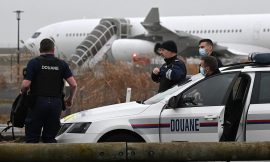Drones equipped with thermal imaging technology are being used to save wildlife, leading to an increase in funds for the drone technology funding program for wildlife rescue by the Federal Ministry of Food and Agriculture (BMEL). The funding, previously set at 2 million euros, will now be increased to 4.4 million euros. Interested parties can apply for funding through the Federal Office for Agriculture until September 1st. Over 1,100 funding applications were submitted by the deadline at the end of June 2023, and the BMEL aims to ensure that all eligible applicants receive funding.
Drones with thermal imaging cameras, particularly those manufactured by DJI and Yuneec, have proven to be effective in rescuing fawns. Tens of thousands of young animals, including fawns, young rabbits, and ground-breeding animals, have been saved from mowing-related deaths using this technology. The use of drones with thermal imaging cameras has significantly improved the rescue process compared to previous methods such as scaring away animals or manually searching the affected areas. The drones offer a more efficient and time-saving solution.
The BMEL has funded a total of 1,178 drones over the past two years, providing up to 4,000 euros per drone. Fawns and other young animals, due to their instinct to push instead of flee, often seek refuge in long grass. This can be dangerous during mowing, as the high grass can become a deadly trap for them. The escape reflex is absent in the first two weeks after birth, leading the animals to crouch flat on the ground when faced with machinery such as combine harvesters. This makes them difficult to spot from the driver’s cab, resulting in accidents where animals are injured or killed by mowers.
The Jägerschaft Hannover Land eV, a hunting association, was able to purchase two new drones through the funding program. Before farmers commence mowing, hunters use the drones equipped with thermal imaging cameras to search the area. The drones can detect the animals based on their body temperature, which differs from the ambient temperature in the early morning hours. Once located, the animals are saved using various methods such as luring them away with grass or transporting them to a safe location. Neutral gloves are used to handle the animals to ensure they are accepted back into their natural habitat. Another method involves placing the animals in a covered box in the shade and releasing them at the edge of the mowed area. Additionally, flags are set up to draw attention to the animals, informing the farmers to maintain distance. With the help of drones, these measures have become highly effective in safeguarding wildlife during the mowing process.



